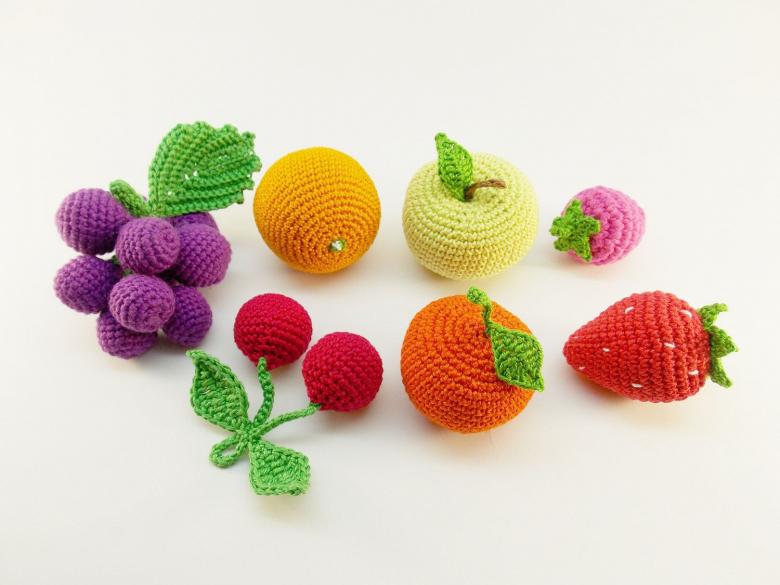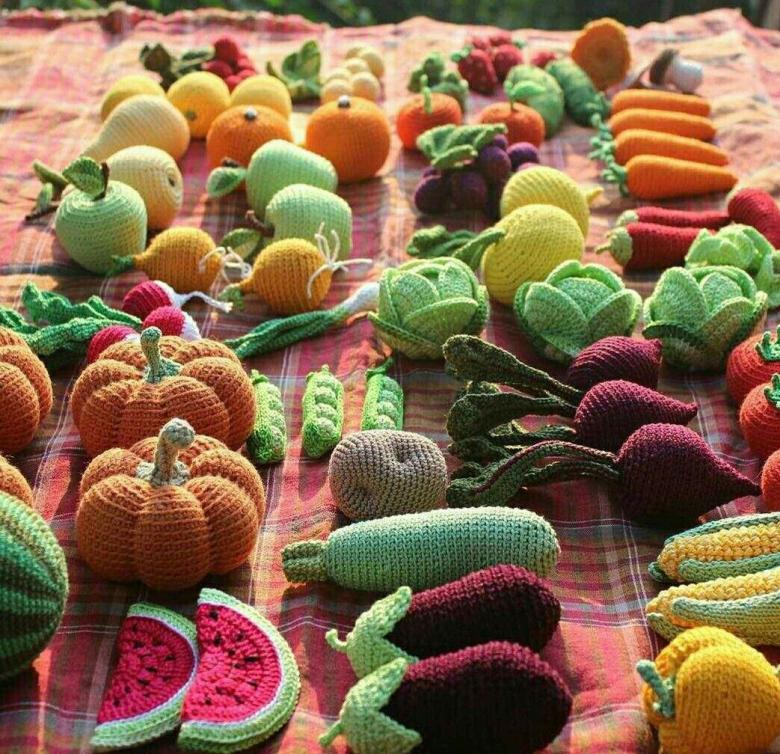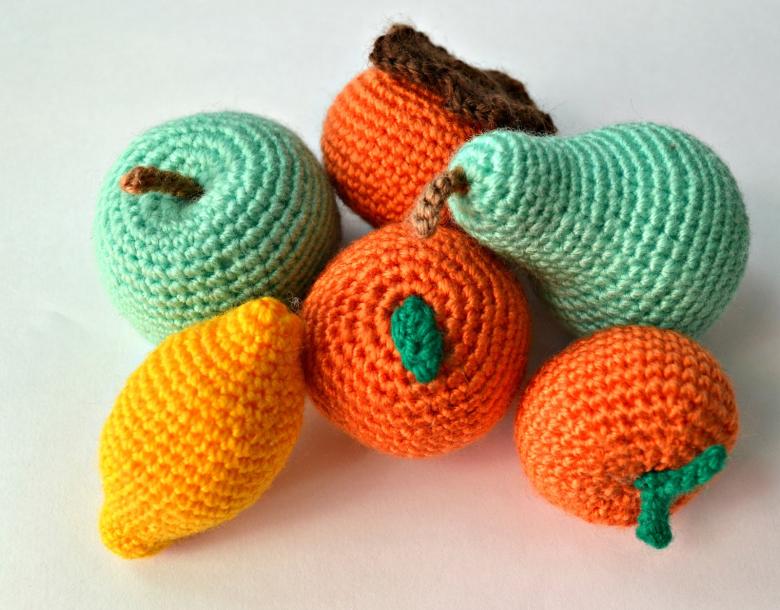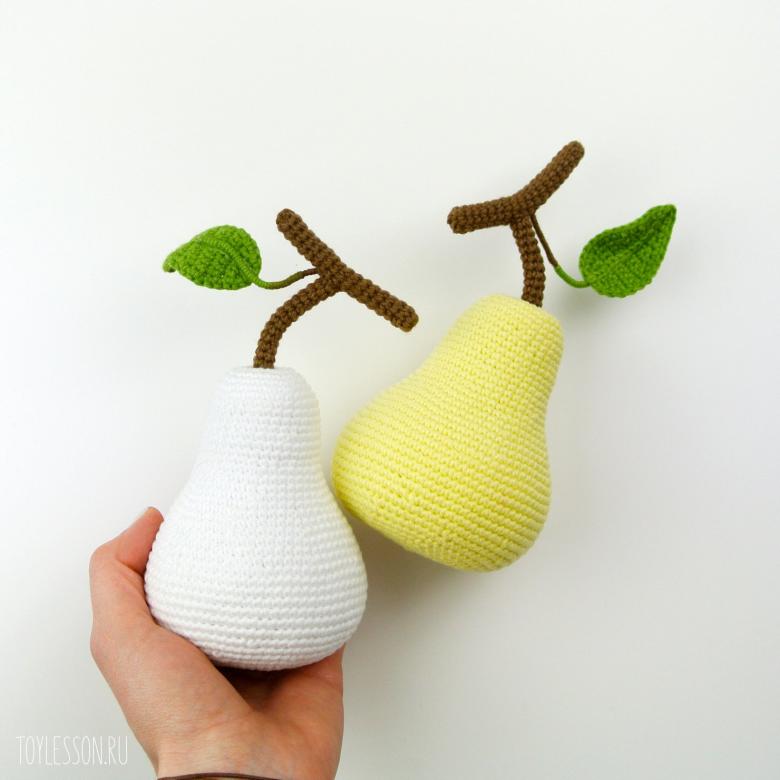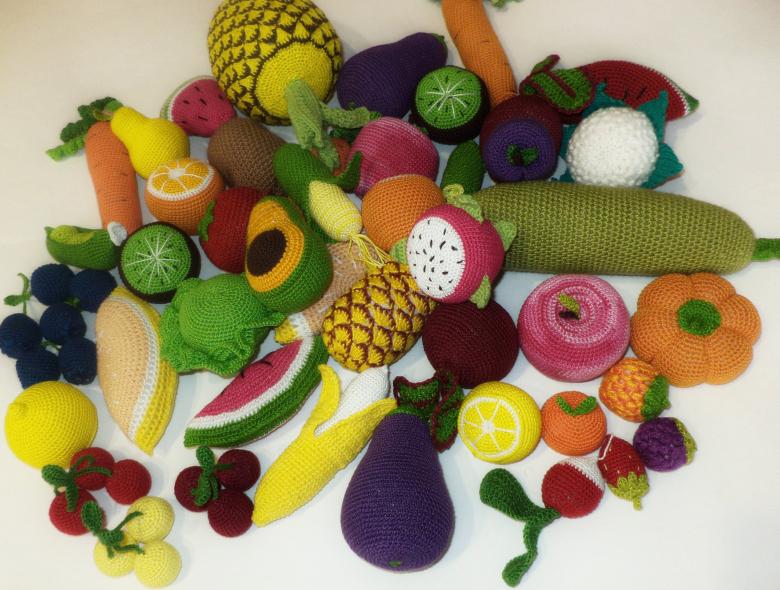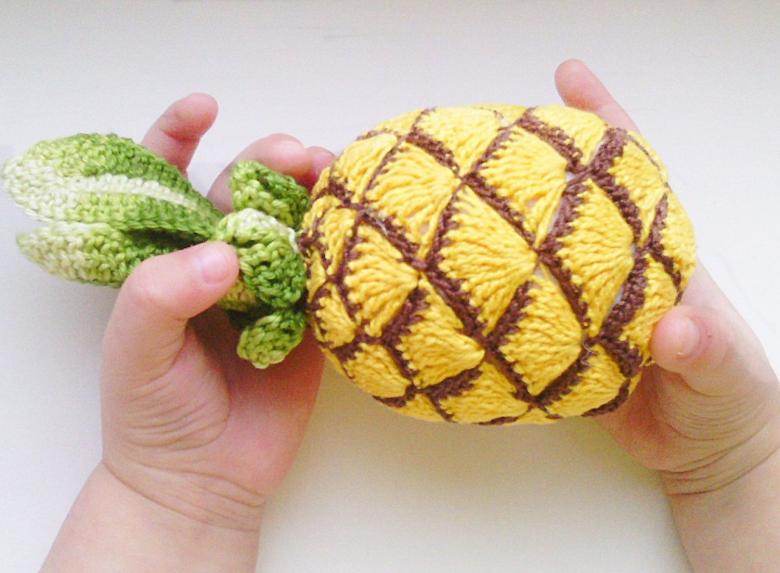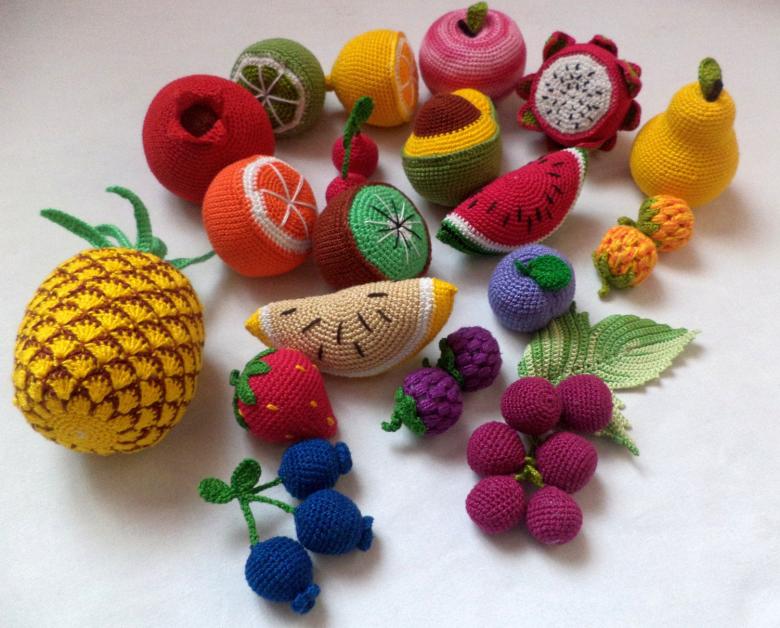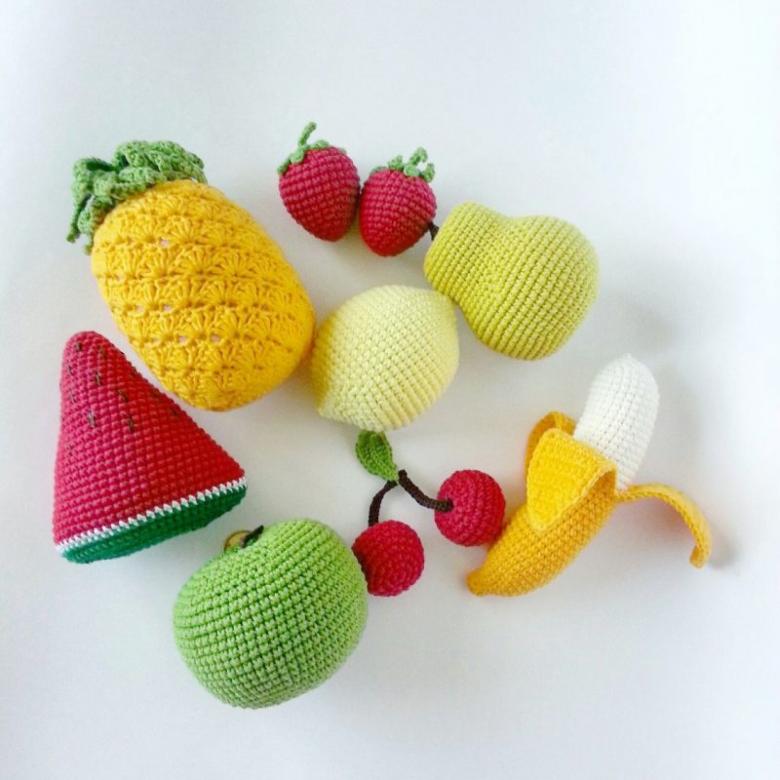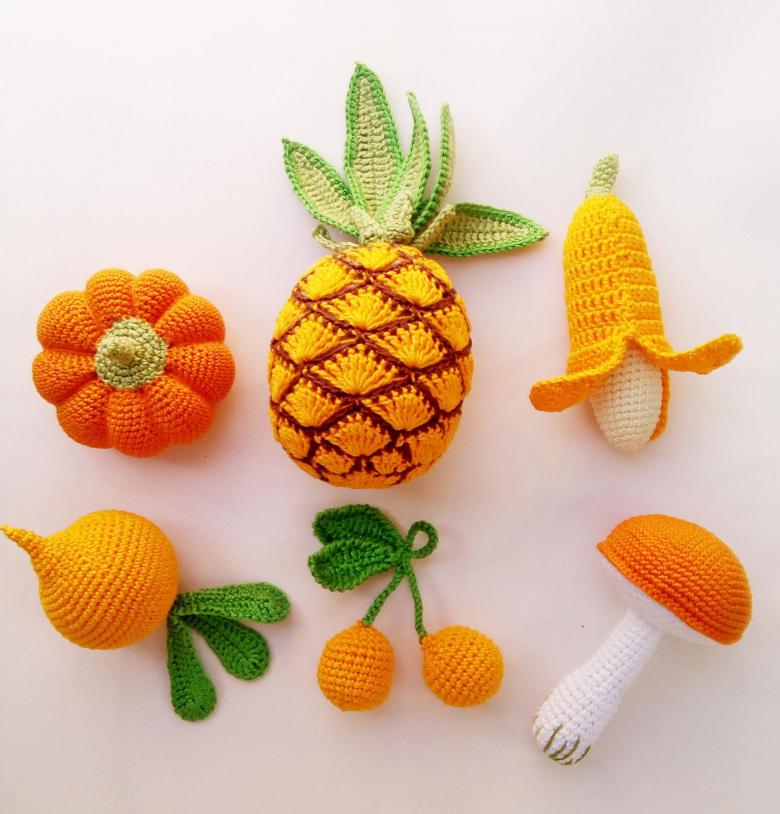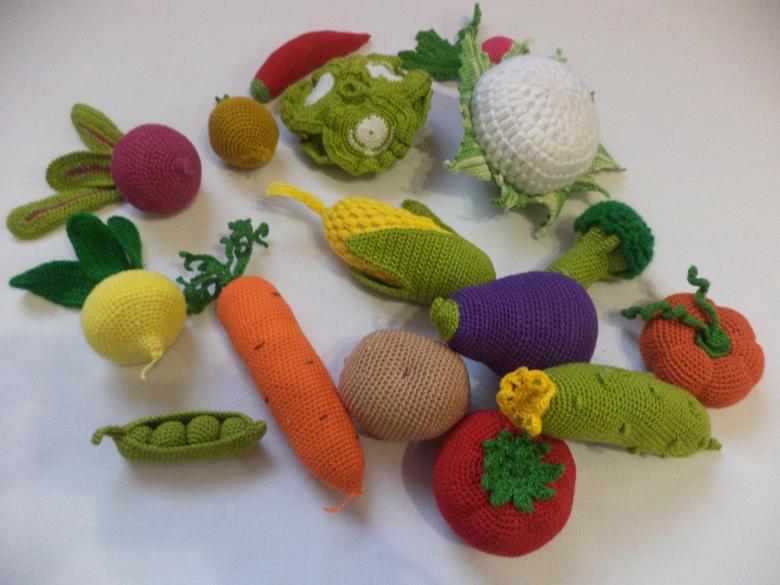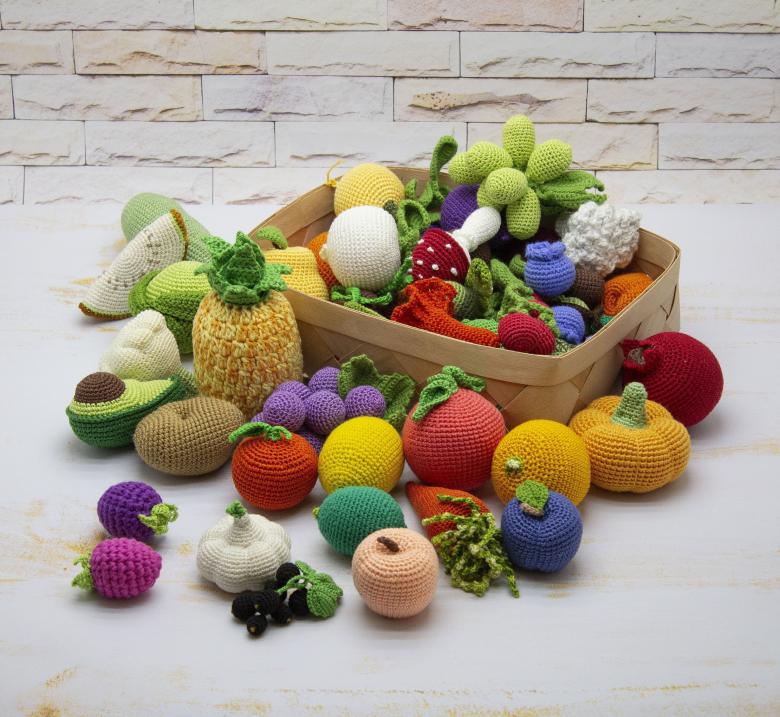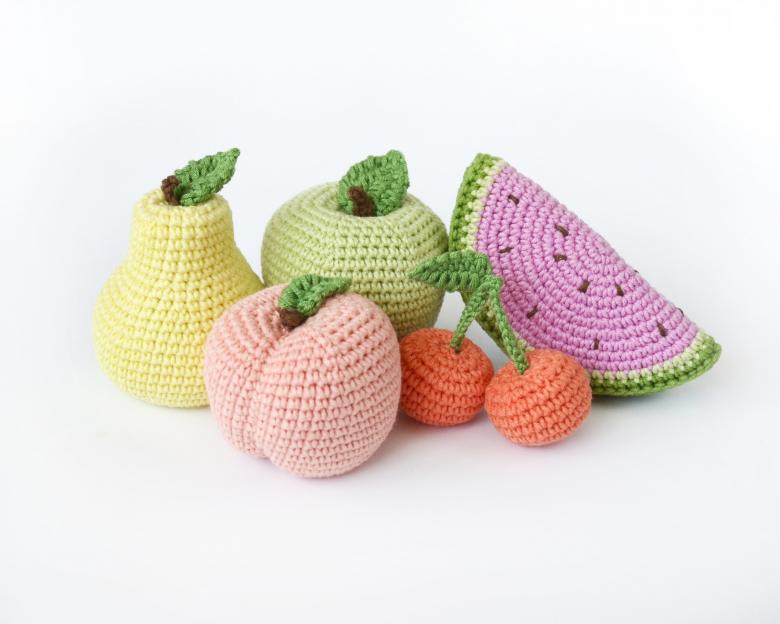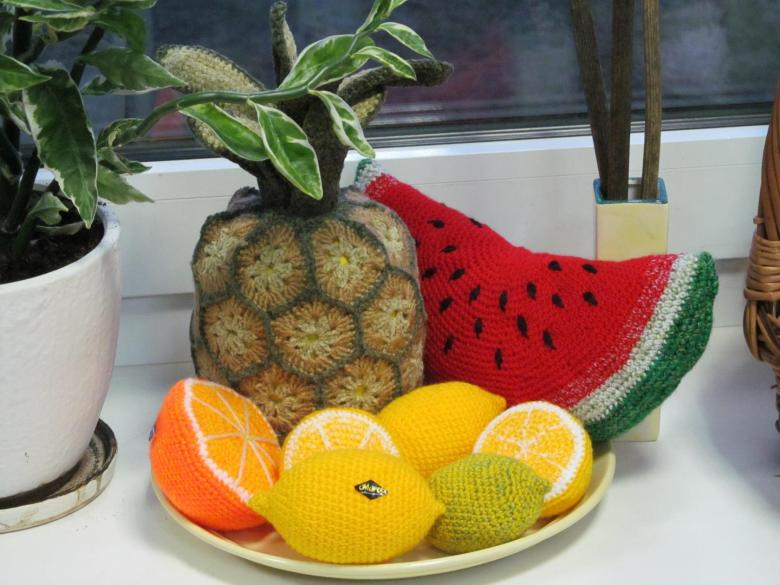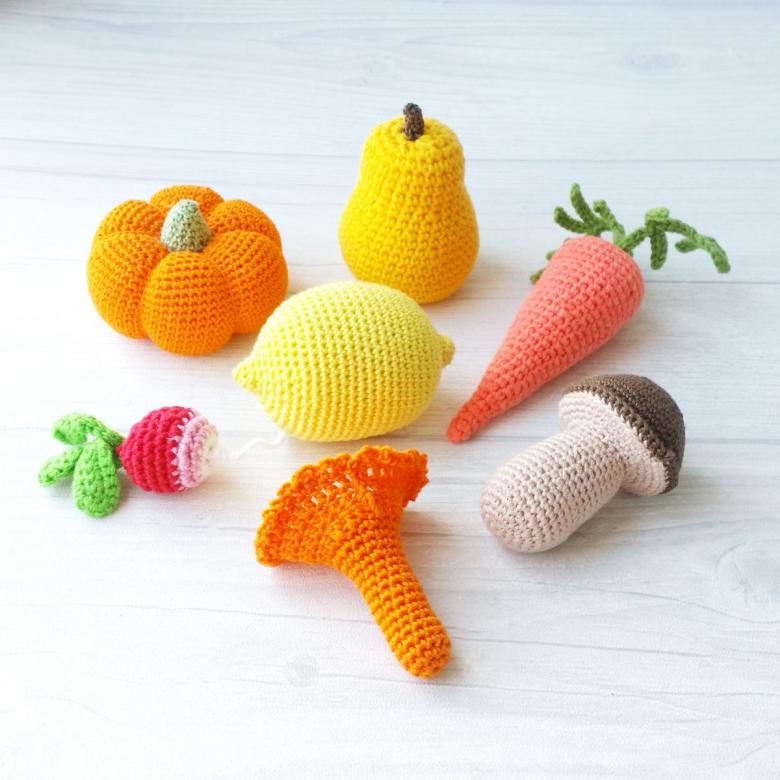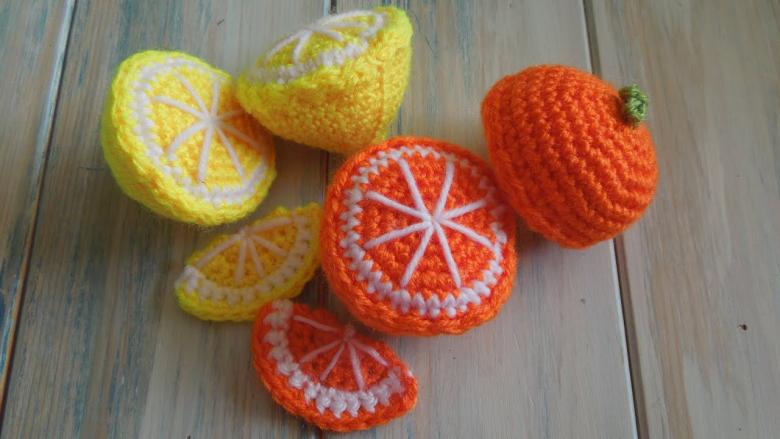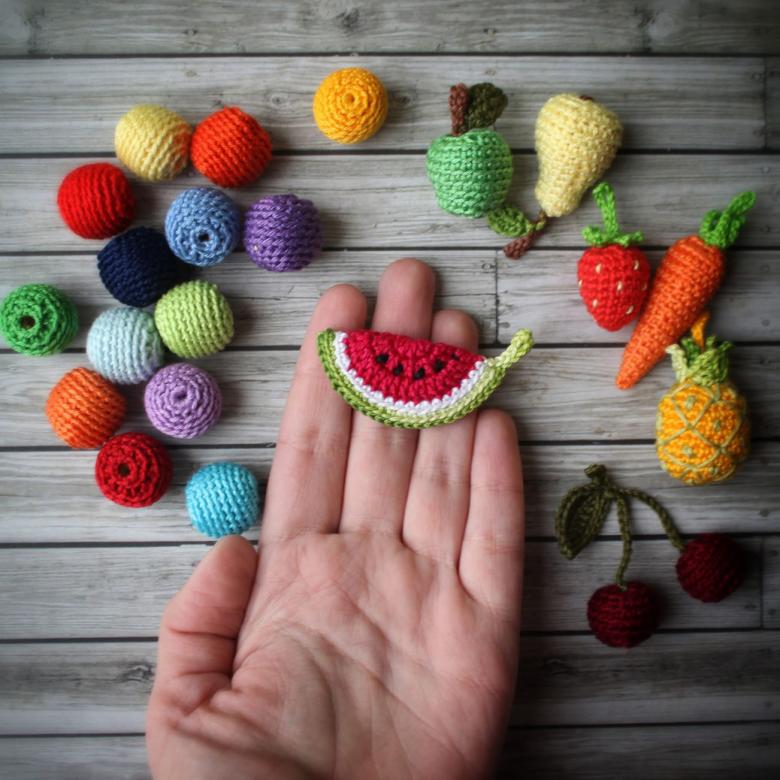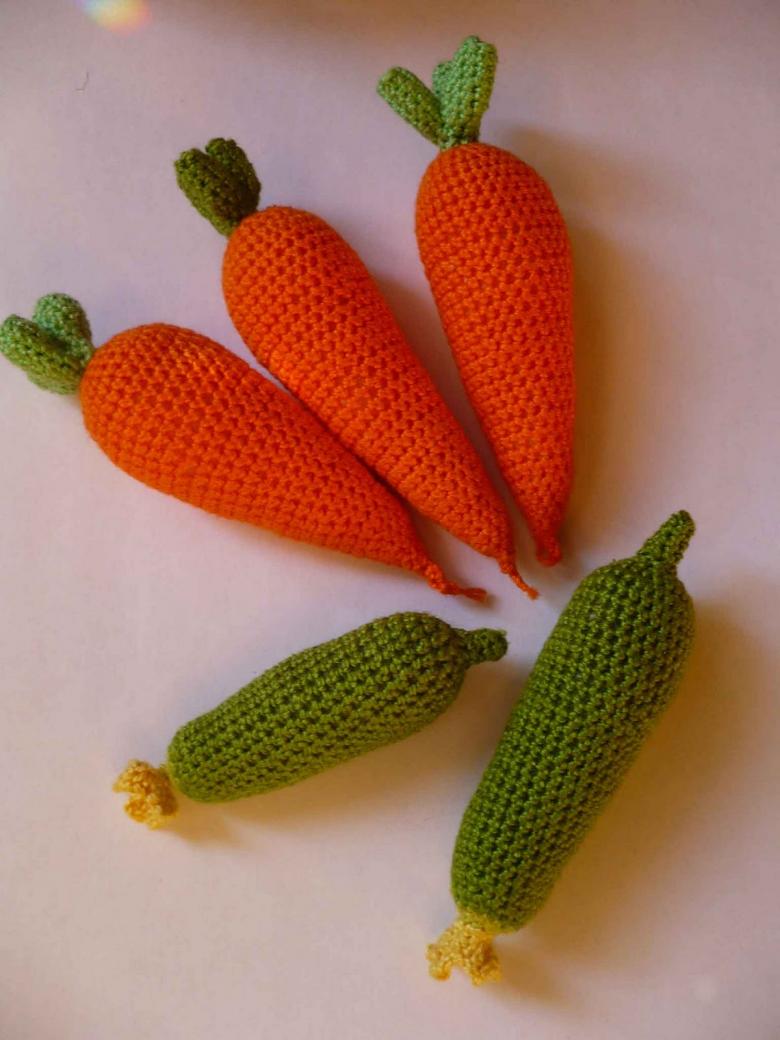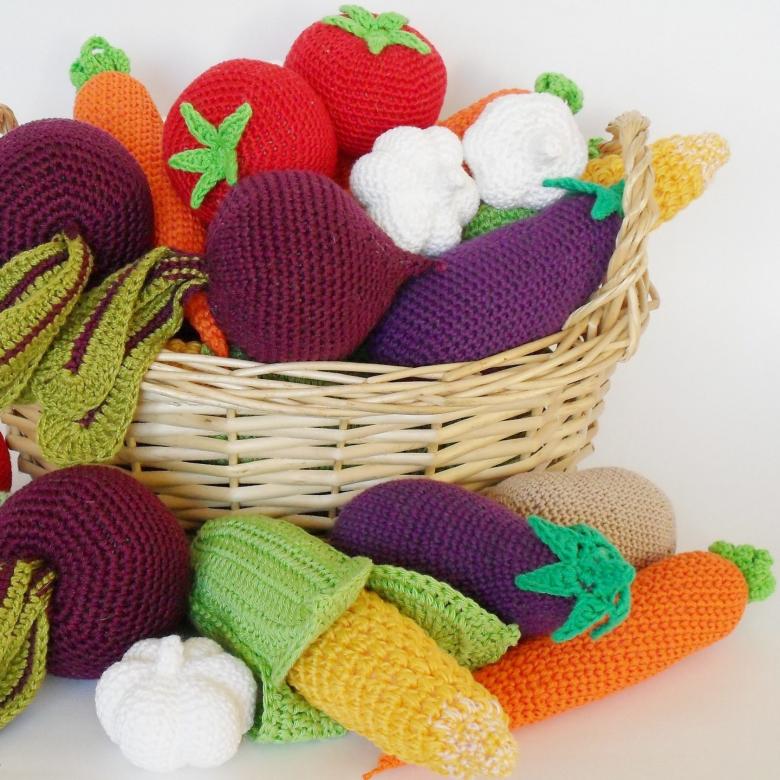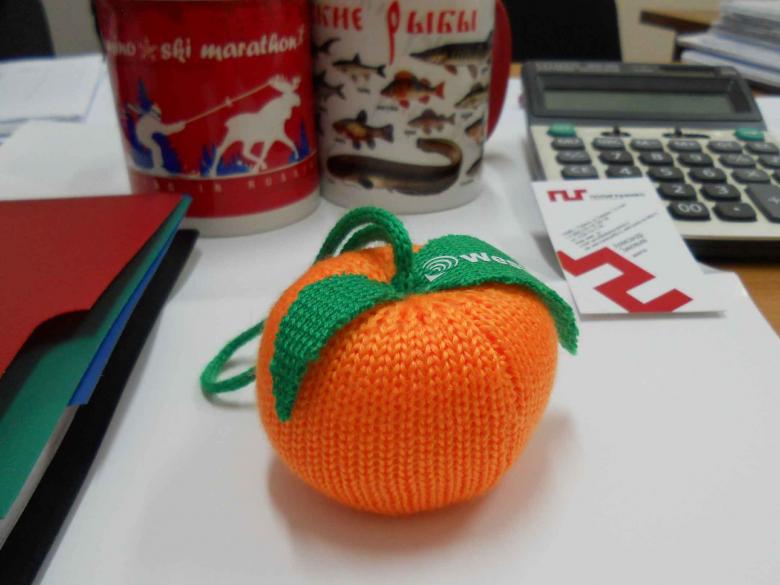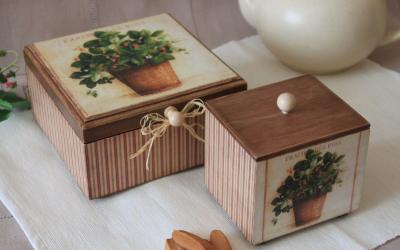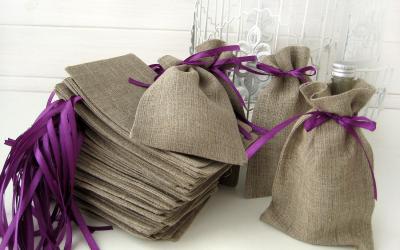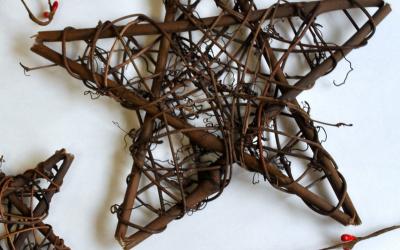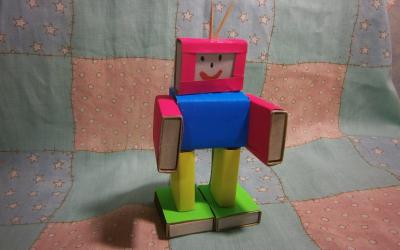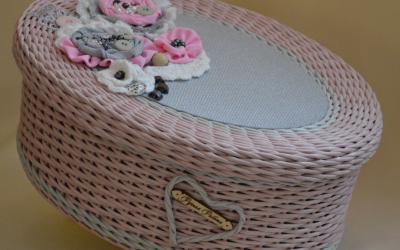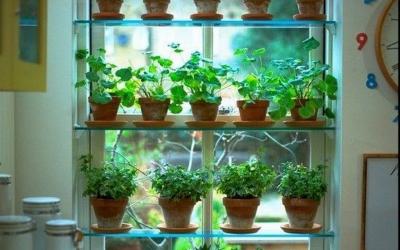Crochet fruit - a description for beginners, smart tips, photo ideas
Elements of interior decoration, made by our own hands, are always in fashion. Recently, crocheted fruits and vegetables are popular and cause great interest. Such original products can decorate a wall panel, fill a beautiful basket in the dining area. And how much joy these toys bring children!
Work on the product will not take much time, if you prepare for it in advance.
Preparing to crochet fruit
Tools and materials
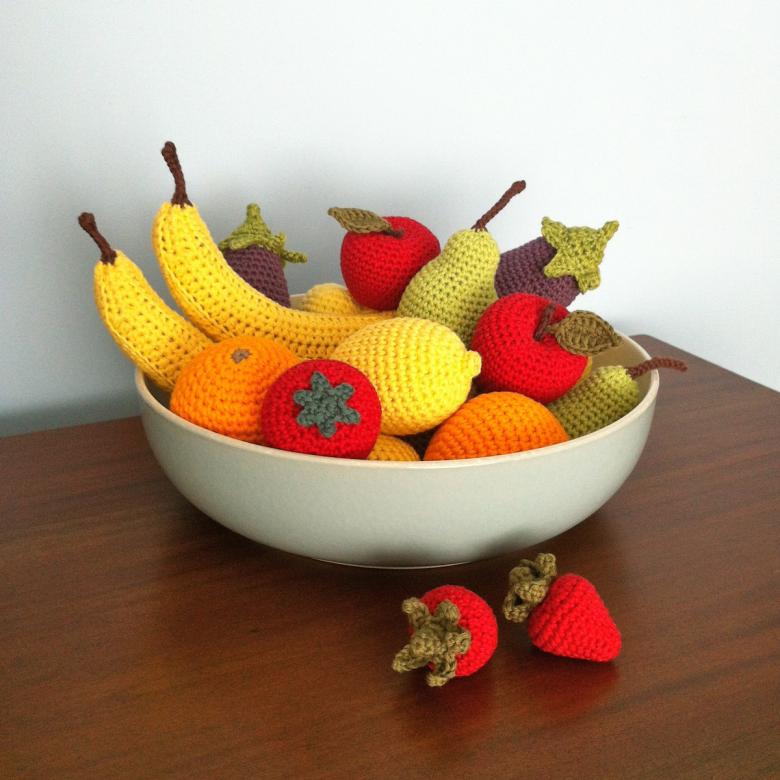
Yarn
For the success of your idea, you can use leftover yarn. The most ideal option for knitting fruits and vegetables is acrylic yarn.
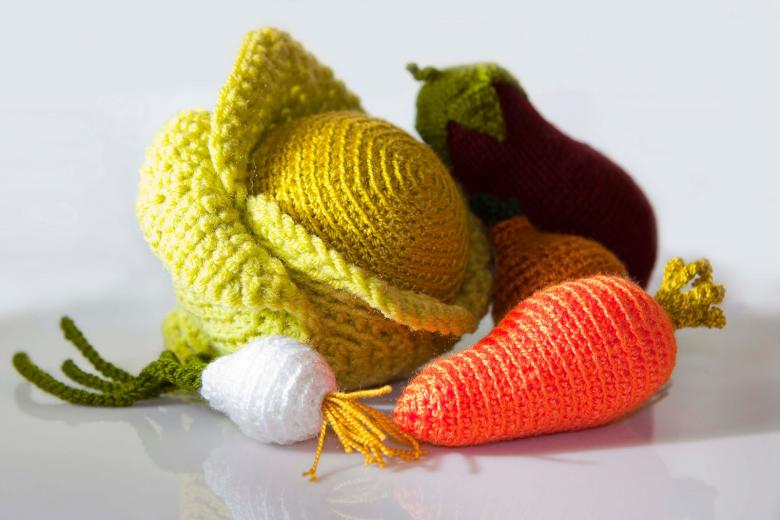
The advantages of acrylic yarn for knitting fruit:
- Low cost of yarn.
- The brightest colors and many shades.
- The thickness of the yarn allows you to get a beautiful texture of the knitted fabric.
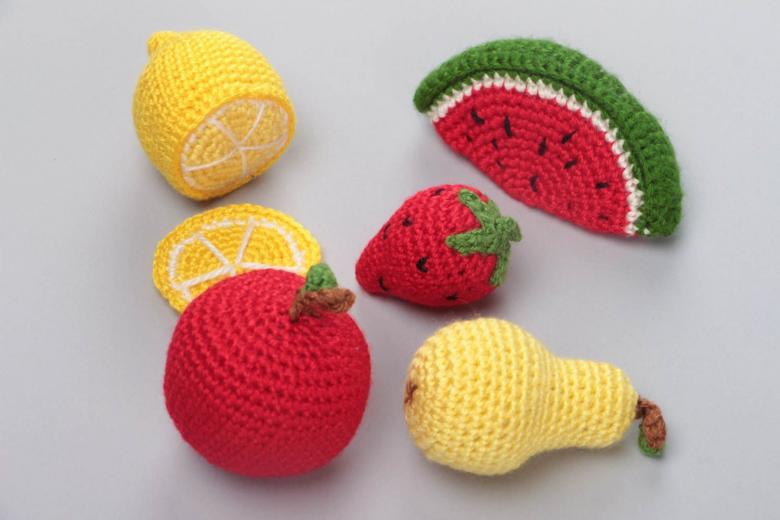
Tools .
To make toys, it is reasonable to use special children's yarn. And wool is not suitable for such an undertaking.
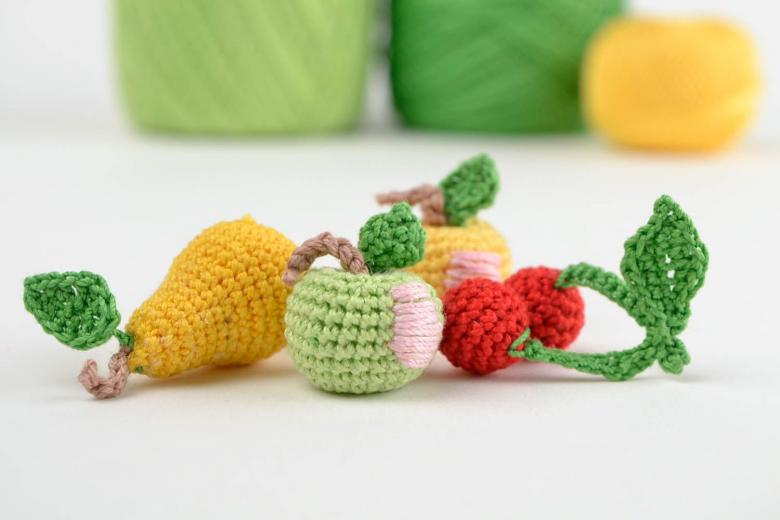
The work can be performed with a crochet hook or spit. Preference should be given to tools made of metal. They are more convenient for knitting a dense cloth.
The thickness of the thread should correspond to the size of the tool.
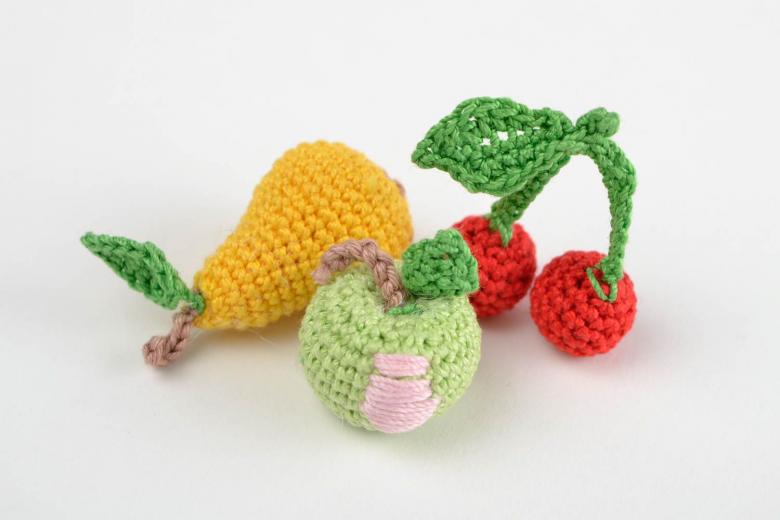
Filling
In order for the finished product to look aesthetically pleasing and retain its shape even while playing, you need a filler. Different materials are suitable for stuffing. Artificial nonwoven materials (holofiber, sintepon) or natural ones (peas, groats, coffee beans) can be used.
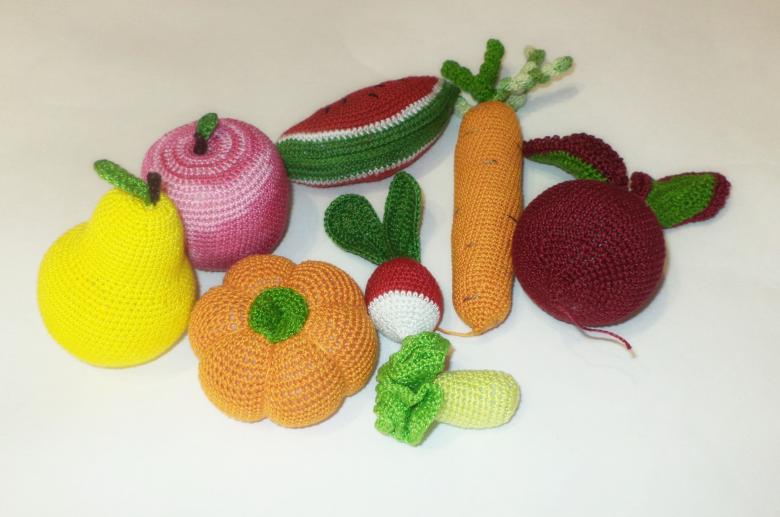
Getting Started
It is more convenient to crochet fruits and vegetables with a hook. It makes it possible to change the number of loops inconspicuously. When working on such products, the technique "amigurumi" is used.

For those who are not familiar with it, the task will facilitate a simple instruction:
- Yarn should be wound on a pencil.
- Carefully remove, so as not to unravel the resulting loop.
- Tie with a crochet hook, in a circle.
- Make 6 columns without a stitch.
- Connect the last and first stitches.
- Pull the beginning of the thread.
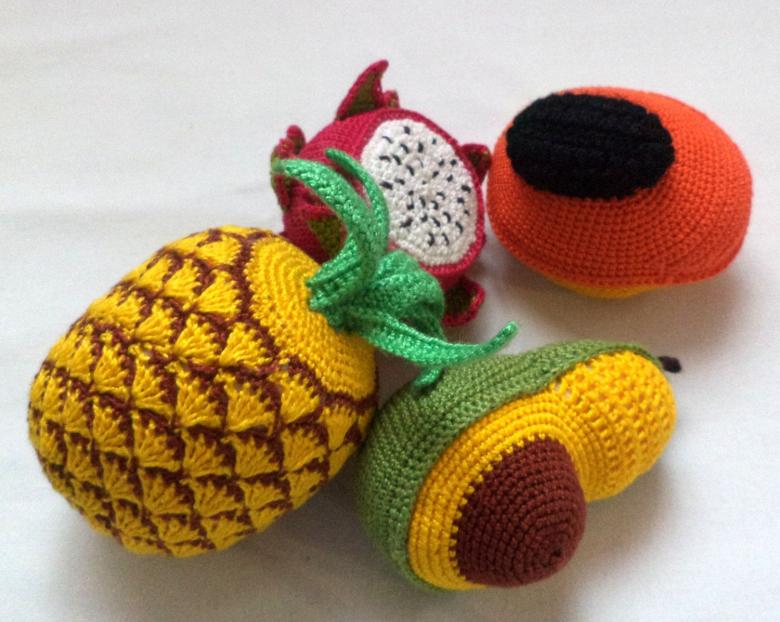
Instead of a hook, you can knit with short needles (those designed for knitting socks). To start work, dial 3 stitches and knit in a circle, adjusting the number of loops.
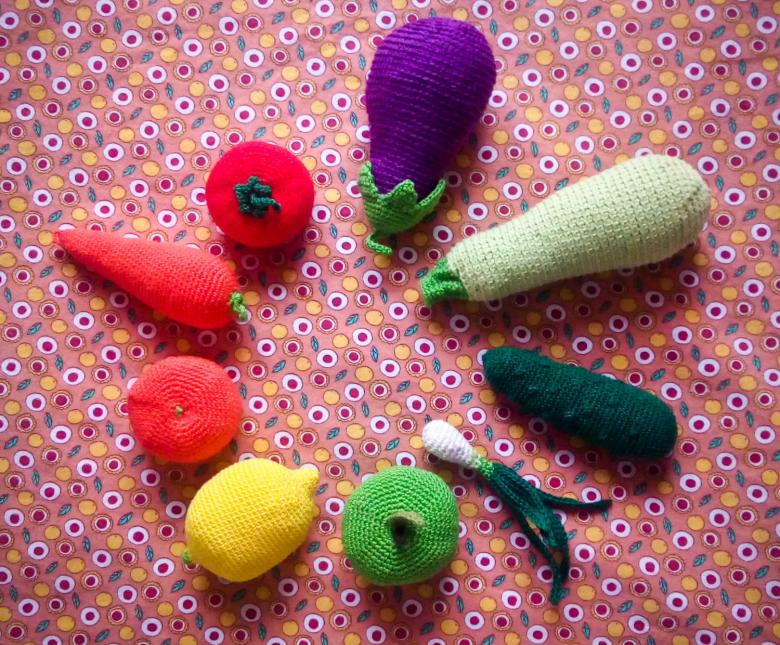
Simple circular products
Not having much experience in this kind of work, it is easier to start with vegetables and fruits with a round shape. They are not difficult to knit, and the practice will help "to get a hand" and prepare for more complex products.
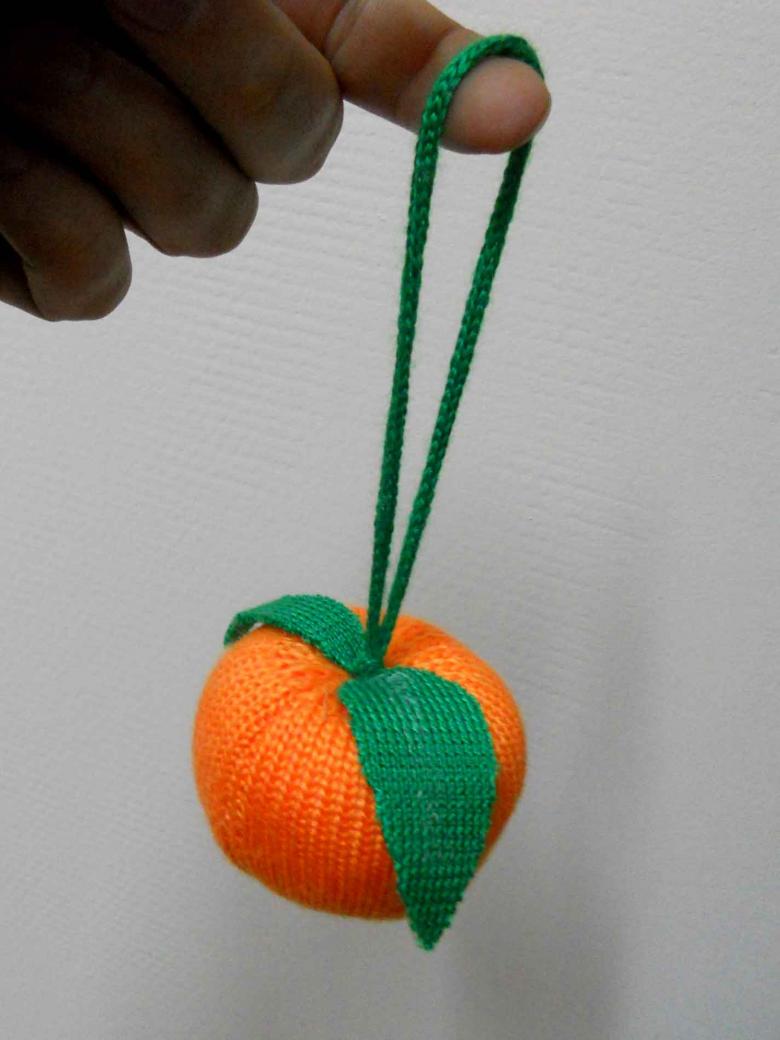
Tangerine
To carry out the idea it is necessary to prepare:
- Tool. In this case the crochet is done by crochet.
- The thread is orange. If you want to supplement the fruit leaf and peduncle need green and brown yarn.
- Filling stuffing for the finished product.
- Scissors.

Step by step instructions
Work begins with a set of 4 loops of orange yarn.
- Knit 6 columns without a stitch in the ring.
- Add 6 loops. To do this, make 2 columns without stitches in each stitch.
- Add stitches through one: 2 columns without a stitch in every second stitch.
- In the fourth row add in every third stitch.
- In the fifth add in every fourth stitch.
- From the sixth to the twenty-fourth rows, knit in a circle.
- At this stage, add to every 5th stitch in row 7, to every 6th stitch in row 9, to every 7th stitch in row 15. The total should be 48 loops.
- The stitches are removed from the 17th row. After every 6 stitches 7 and 8 stitches are combined into one.
- Then in the rows, they are added every 6th, 5th, and 4th stitch, respectively.
- Completed 24 rows, time to start stuffing.
- By completing row 25, every 3rd stitch is reduced, in row 26 the reduction is on every 2nd stitch.
- Such a scheme is carried out until only 5 loops remain.
- The thread is cut, leaving a bit to insert the remainder of the needle, pull the cloth and stitch the product.
The fruit is ready.

Stalk if desired, you can knit from brown yarn. Make 12 air loops, tied them with a half-step with a hook, holding the hook to the third loop. Foot and leaf are attached separately.
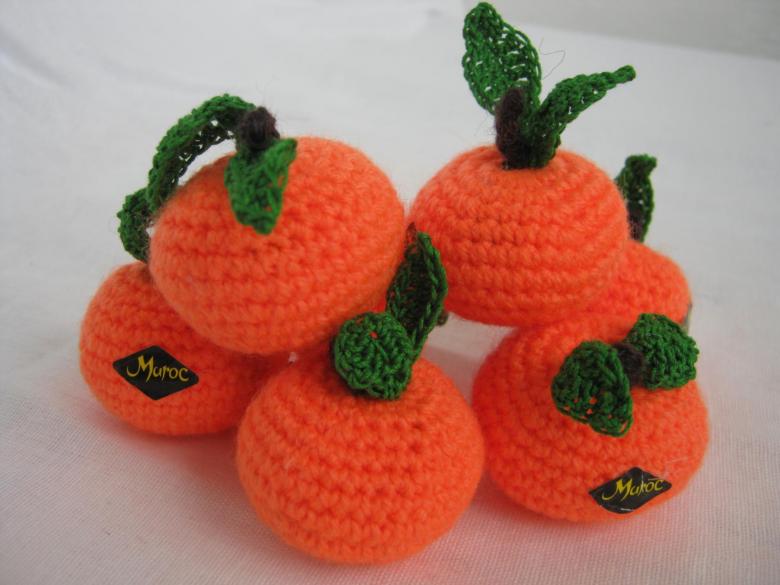
A similar scheme is used when knitting an apple. From yarn like iris with a thin hook, you can knit cherries, raspberries and blackberries.

Crocheted pear.
Pears are found in green, yellow and red colors, so you can pick up yarn to your taste. Only the shape of the final product remains unchanged.

- To do the work, you need to dial in the loops and knit 5 rows to get a flat rounded surface. The next row should be knit in the same way.
- Then add 3 to 5 stitches in the row.
- Then do another 5-7 rows without change.
- Then reduce the number of stitches in stages for 3 rows to half the number of stitches.
- The next 6 rows do not change. The product is filled with stuffing.
- Cut half the stitches, then in a row, 4 stitches, then 2 more times 2 stitches.
- Cut the thread, fix the remaining loops and pull the finished product. You can make a leaf and stick.
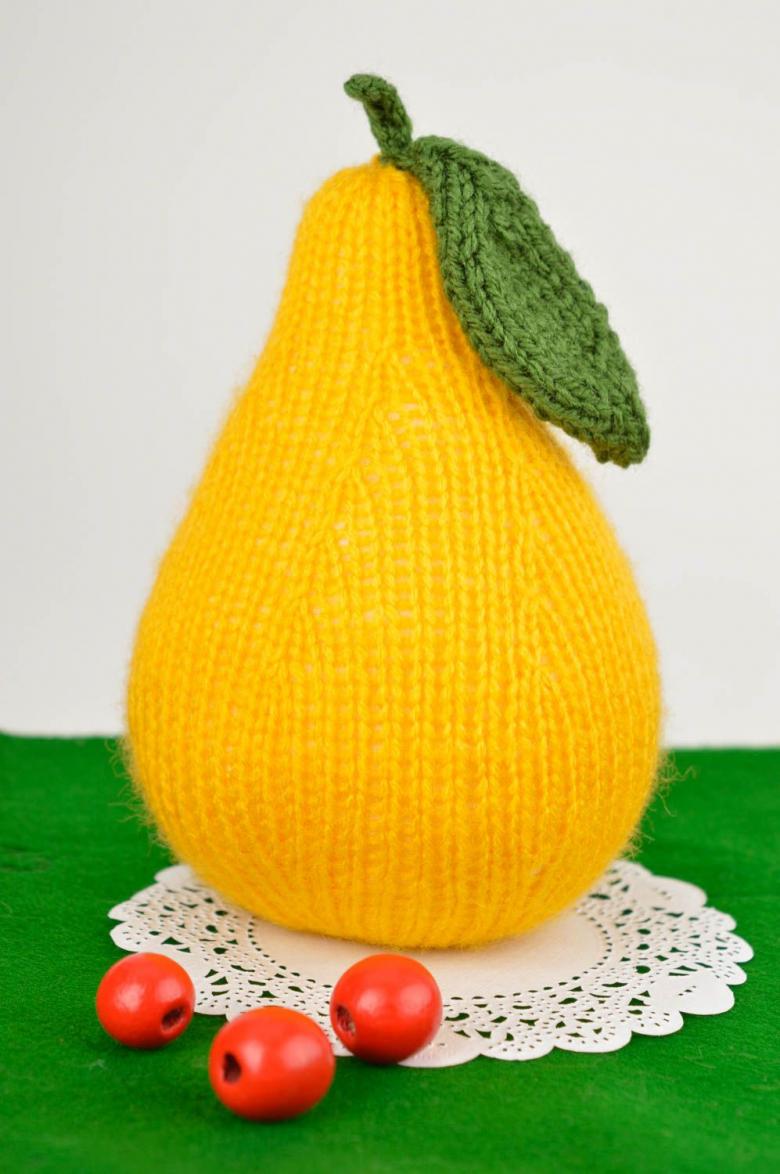
So you can make different fruits and fill them into the original fruit basket or vase. Crocheted fruit perfectly fit into the interior of the kitchen and will be a good option for a gift. With such toys children are happy to do. Stuffing with peas helps develop fine motor skills. Taking as a basis the description of the work, you can knit fun rattles for babies.

Lemon .
Not so important is the knitting technique when doing the work. The main trick to knitting beautiful fruit lies in the technique of adding and subtracting loops.

A crocheted lemon can be a great decoration for the kitchen interior.
- Start with a set of stitches.
- In 15 rows, add 3 stitches in each row.
- Perform 3-5 rows in a circle.
- Deduct the number of loops as added, 3 in each of the next 15 rows.
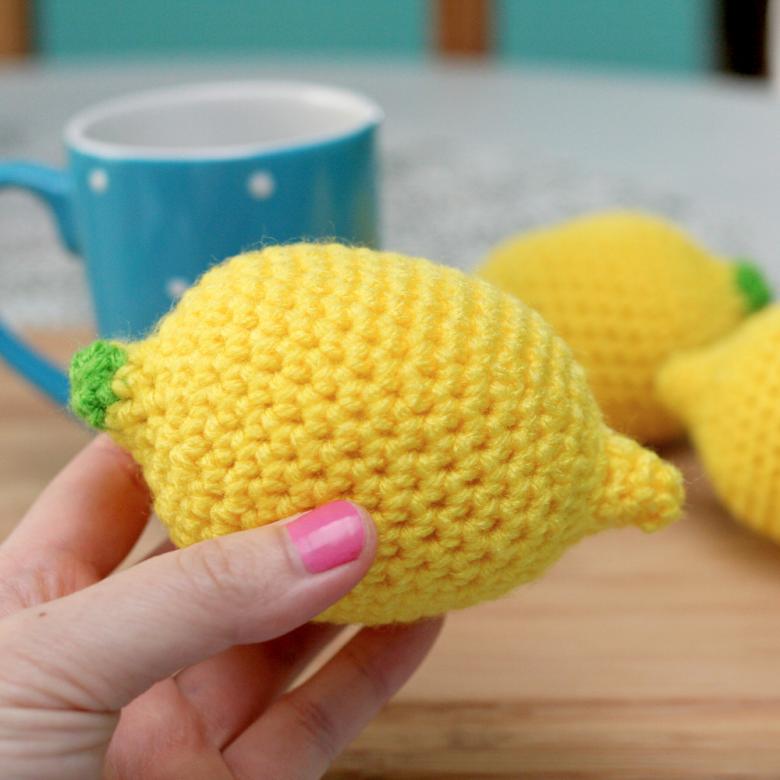
Slit lemon
- Knit the product by the previous scheme a little more than half.
- Duck into a row of 3 loops, replace the yellow thread with white.
- In 3 rows, change to yellow yarn, form a circle, gradually reducing the number of loops.
- "The cut" of the lemon is decorated with white thread, imitating the slices.
Such knitted food will no doubt arouse the interest of guests.
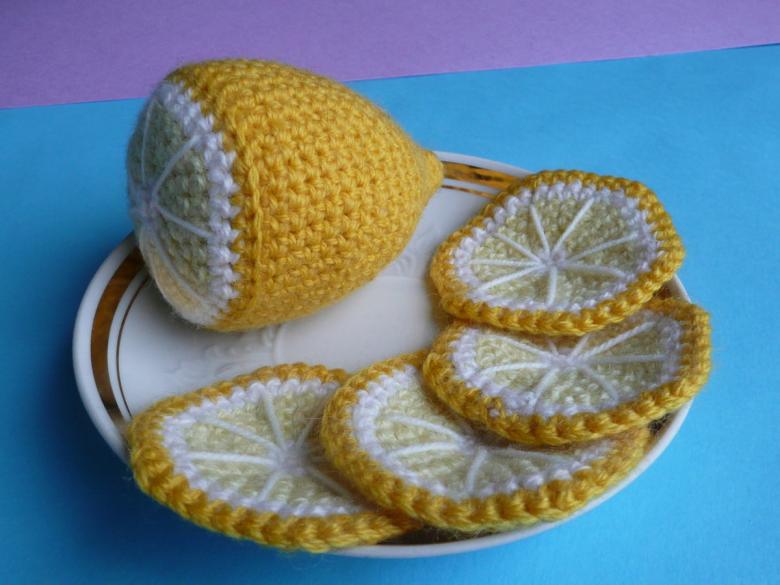
Applying creativity, with the help of a hook or needles, you can "make" a variety of fruits, vegetables and berries.

Crochet vegetables
Carrot
Crocheted carrot looks busy. It is not difficult to knit from orange yarn with a hook.
- To implement the conceived scheme is used, which allows you to knit a cone.
- The loops are dialed and knit in a circle.
- Add the number of loops should be after 2-3 rows.
- When adding loops to get a neat product, their number should not be more than a fifth of the already available.
- It remains to knit and sew the green leaves if desired.

According to a similar scheme, you can knit sweet or bitter peppers. In the work it is important to convey the natural shape of a particular vegetable. Sweet peppers can be made more voluminous, and bitter peppers are knitted narrower than carrots.
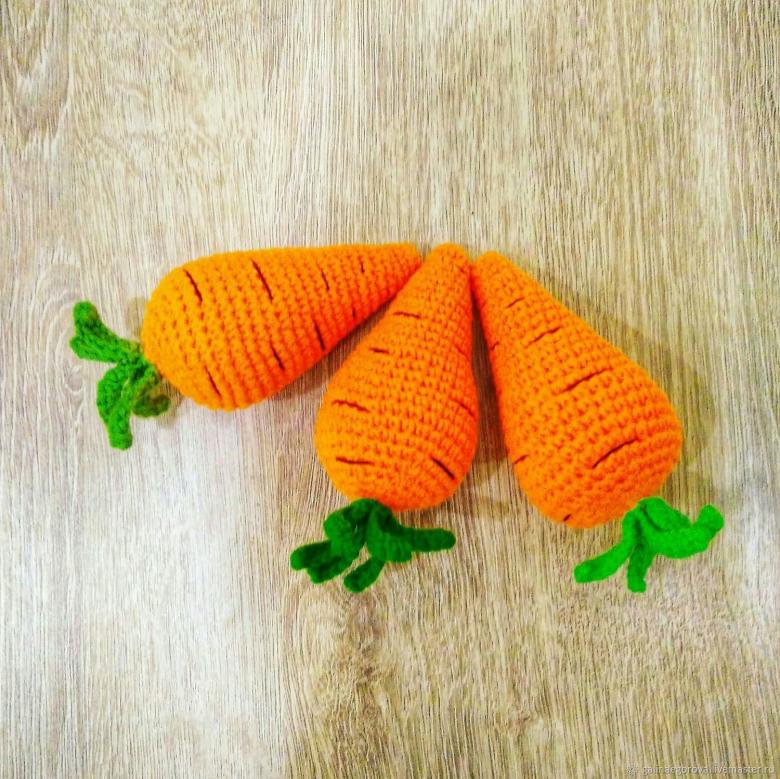
Knitted turnip
Turnips are known to everyone thanks to the fairy tale of the same name. You can please your child with a knitted turnip, because it is not one of those vegetables that you often meet in the store.

Make it easy.
- Dial a loop and knit 3 rows in a circle.
- While knitting the next three rows the number of loops doubled.
- The next row is done without change.
- Add loops about one-third of the total.
- The next 8-9 rows are done without change.
- Add stitches for the next 6 rows.
- Sew up the product.
- You can knit and sew on the leaves.
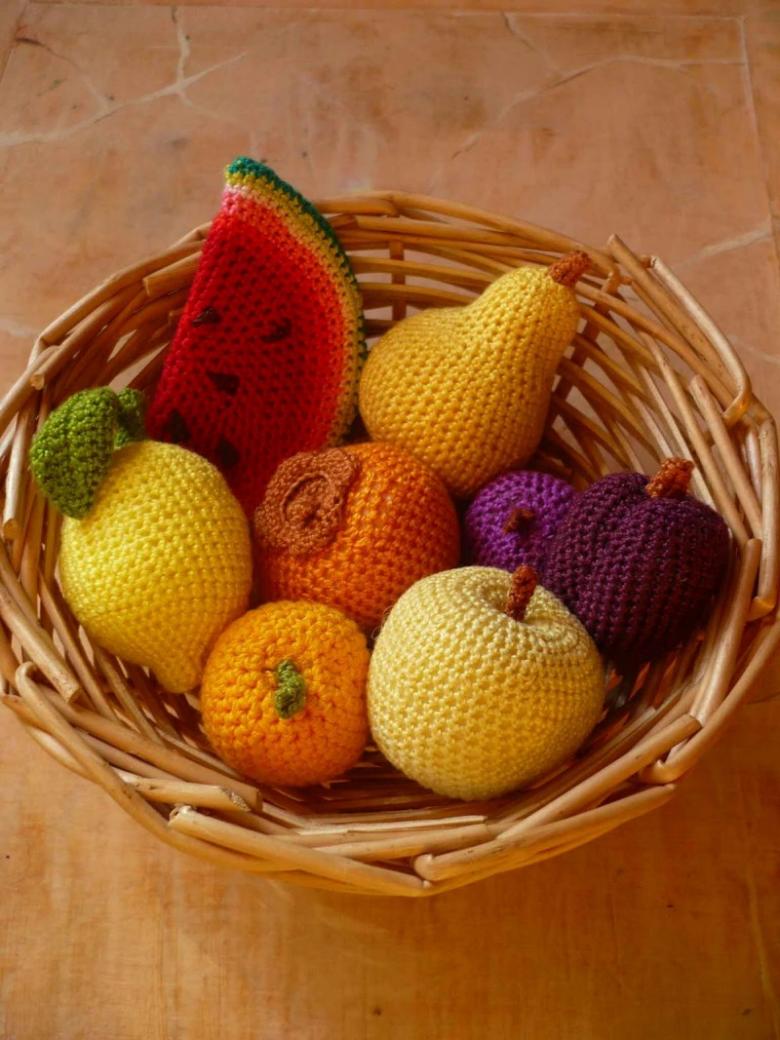
With creativity and skill in knitting techniques can make original items for home decor. Such items look harmonious and stylish.

Knitted fruits and vegetables as toys will bring variety to any children's crafts. Accurate cherries will serve as an original decoration of a summer bag or a beach hat.




